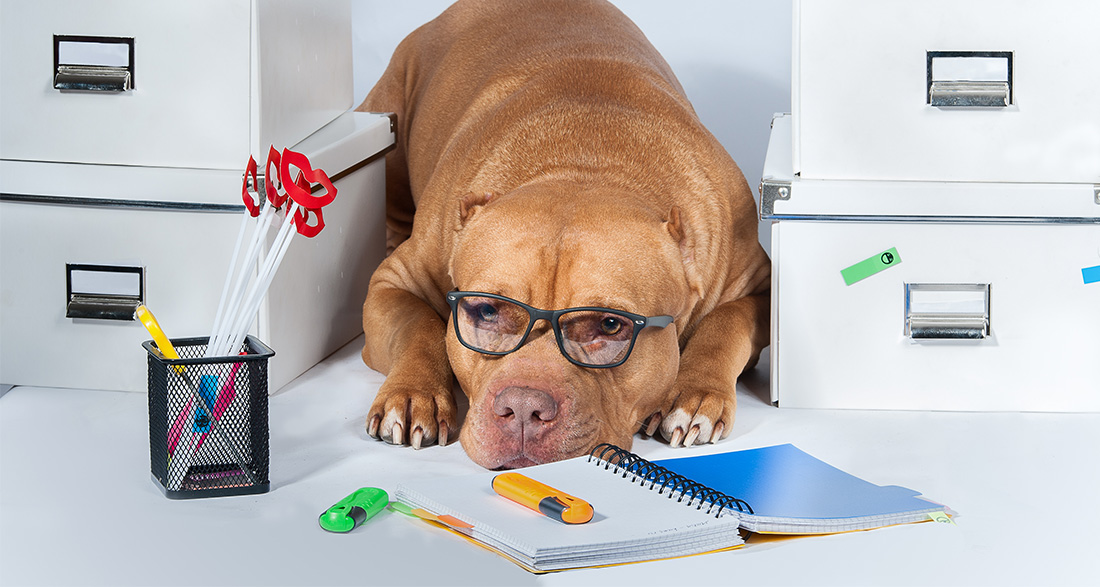Wondering how to calculate the correct amount of food for your dog? In this article, you’ll learn about the factors to consider when determining the amount of food to feed your dog and the methods available to ensure your dog receives the right balance of nutrients.
The optimal amount of food varies for each dog. When estimating the amount of food, it depends on what you’re feeding: wet food? Barf? Dry food? Maybe you’re feeding your dog a combination of these.
Consider these factors when determining the amount of food

Regardless of what you’re feeding, the quantity of food should always be adjusted to suit your dog.
The following points are important:
- Age
- Size and Weight
- Breed
- Activity level
- Health
Your Dog’s Age
A puppy is in the growth phase, therefore, they have a higher – and different – nutritional requirement compared to an adult dog. They need more energy and should consume about 6% of their body weight in food. Insufficient intake can lead to inadequate age-appropriate development.
You don’t necessarily need to buy puppy food to provide high-quality nutrition for your little companion. There’s nothing different in puppy food compared to adult dog food.
Opt for wet food without artificial additives.
Caution: When your food mentions “nutritional additives”, they are chemically produced. It’s not possible to provide precise information about vitamins, minerals, and trace elements with natural ingredients. Excessive artificial nutrients can lead to skeletal deformities in your puppy.
Is your furry friend already an adult? Then the goal is to maintain a healthy body weight. Your dog should receive enough food to neither gain nor lose weight. The quantity can vary.
For example, if you’re planning a hike with your dog or if they accompany you during sports, they’ll need more energy than on relaxed days with little activity.
In older dogs, metabolism slows down. Digestion becomes slower. To prevent weight gain in your senior dog, reduce the amount of food and increase the meals to 3 times a day.
Your Dog’s Size and Weight
Large dogs need more food than small ones. Your dog should ideally maintain its ideal weight. Is their waistline clearly visible?
Tip: It’s best to observe your dog from above!
Can you feel their ribs and spinal vertebrae under a thin layer of fat? They should not be visible but palpable.
If ribs and spinal vertebrae are visible, your dog is a bit underweight. Increase the daily food amount.
If you can neither see the waistline nor feel ribs and spinal vertebrae, your dog is likely overweight, and the food amount should be reduced.
The Breed of Your Dog
Some dog breeds have lower energy requirements than others. These include retrievers such as the Labrador Retriever and the Golden Retriever. Dogs of these breeds enjoy eating.
However, their nutritional needs are lower than those of other breeds. Beagles, Newfoundlands, and Bernese Mountain Dogs also require less energy.
Other dog breeds have higher energy requirements. Terriers, Greyhounds, hunting dogs, and Great Danes need a high-energy diet to supply their bodies with enough energy.
Your Dog’s Physical Activity
If your dog plays a lot, jumps, romps, and barks, they’ll burn more energy than a calm dog.
Let’s say you have a sporty Schnauzer. Perhaps he always runs back and forth during walks and can’t get enough of running and playing. Maybe he even accompanies you jogging, where he can really exert himself.
The more your adult dog performs, the higher the energy density of their food should be.
Your furry friend’s health condition
If your dog is unwell, you may need to adjust the type and amount of food to their health condition. In this case, your veterinarian or a nutritionist can assist you.
Other factors
Other factors that play a role in the amount of food:
- Neutering: Is your dog neutered? Then they may be more prone to overweight than an intact dog. Neutered males typically move less after the procedure, while females may show increased appetite. The food amount may need to be reduced.
- Coat change: Dogs with thick fur require 10 to 20 percent more energy during coat change than usual. During this time, you can slightly increase the amount of food. Alternatively, you can use these phases to help your slightly overweight dog return to their ideal weight. They need more essential fatty acids during coat change than usual. It’s best to feed dog food containing omega-6 and omega-3 fatty acids or add some salmon oil to their bowl. This supports healthy coat formation.
- Heat cycle: Female dogs in heat tend to move less as they are often kept on a leash during walks. Again, it’s advisable to reduce the food amount as a precaution.
- Pregnancy: Is your female dog expecting puppies? Then she needs a lot of energy and the additional nutrients that puppies require. It’s best to consult with your veterinarian to adjust the diet optimally for this period. You should start increasing the food amount only from the fourth week of pregnancy. Before that, the puppies hardly grow. Especially fat and protein are important now. The amount by which you can increase the food depends on the number of puppies. You can give up to 30 percent more during pregnancy.
Why Ideal Weight is So Important for Dogs

Excess weight in dogs eventually leads to health problems, including diabetes and metabolic issues. As they age, joint and hip problems also arise, along with arthritis in many cases.
To spare your furry friend unnecessary suffering and pain, it’s essential to prioritize healthy nutrition from the start.
Even treats like pig ears, chew sticks, and the like contain calories. Dehydrated products are particularly energy-dense. If you want to make sure you’re not overfeeding your dog, calculate beforehand how much they can max out on – and stick to it. It’s not easy when those loving eyes plead with you. But giving in won’t do your dog any favors.
5-Step Feeding Plan
1. Set Feeding Times:
Dogs thrive on routine. Your furry friend will appreciate having their bowl filled at regular times, turning mealtime into a highlight of their day.
2. Wait Before Walks After Eating:
After eating, your dog should rest for about an hour. If they romp around with a full stomach – running, playing, and jumping – it could lead to gastric torsion, which can be life-threatening.
3. Feed Multiple Times Daily:
For an adult dog, two to three meals per day are ideal. This prevents the body from having to process and digest too much food at once and provides a greater sense of satiety. Your dog feels like they’re getting “more.”
A puppy under two months old needs to eat six times a day. Later, you can reduce feeding frequency to four times a day. This keeps your little furry friend’s stomach consistently filled without overtaxing their body with too much food.
4. Tailor to Your Dog:
Your dog may need more or less food than others of their breed. Every organism functions differently. Perhaps they need three meals a day to feel full, or maybe they do best with just one. Observe their weight and overall well-being.
5. Choose High-Quality, Grain-Free Food:
Your dog is only as healthy and fit as what they eat. Opt for grain-free wet food with a meat content of at least 70 percent. The fewer artificial additives in the food, the better. Raw feeding (barfing) or partial raw feeding are alternative options.
Conclusion
Determining the right amount of food for your dog isn’t rocket science. Adjust the quantity according to your furry friend’s needs.
Factors such as age, size, weight, breed, physical activity, and health condition all play a role in determining the amount. A puppy has higher nutritional needs than an adult, while a senior dog requires less food.
Monitor your dog and their weight. This allows you to react promptly if they gain or lose weight and adjust the food quantity accordingly.
In general, prioritize feeding your beloved pet the highest-quality food possible. Unsure about what to feed your dog? Check out our dog food tests!


